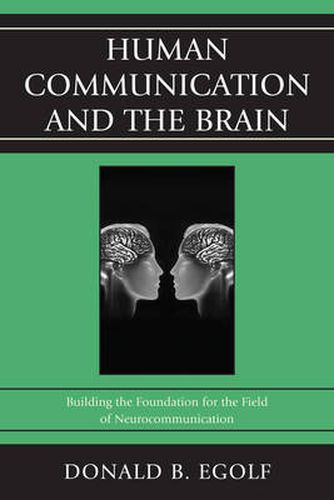Readings Newsletter
Become a Readings Member to make your shopping experience even easier.
Sign in or sign up for free!
You’re not far away from qualifying for FREE standard shipping within Australia
You’ve qualified for FREE standard shipping within Australia
The cart is loading…






Human Communication and the Brain: Building the Foundation for the Field of Neurocommunications, by Donald B. Egolf, provides an introduction to the latest neuroscience research and expands its applications to the study of communication. Egolf explores both methodological and ethical issues that are surfacing as a result of the newest findings, revealing important new questions about the nature of communication and the brain, including: is there a way to communicate directly with the brain? What outside powers should be permitted to access that method of information dissemination?
Egolf’s text has implications for a number of communication subsets, including intrapersonal, interpersonal, political, marketing, and deception, and this new research undoubtedly will provoke debate amongst communication and neuroscience scholars for years to come.
$9.00 standard shipping within Australia
FREE standard shipping within Australia for orders over $100.00
Express & International shipping calculated at checkout
Human Communication and the Brain: Building the Foundation for the Field of Neurocommunications, by Donald B. Egolf, provides an introduction to the latest neuroscience research and expands its applications to the study of communication. Egolf explores both methodological and ethical issues that are surfacing as a result of the newest findings, revealing important new questions about the nature of communication and the brain, including: is there a way to communicate directly with the brain? What outside powers should be permitted to access that method of information dissemination?
Egolf’s text has implications for a number of communication subsets, including intrapersonal, interpersonal, political, marketing, and deception, and this new research undoubtedly will provoke debate amongst communication and neuroscience scholars for years to come.